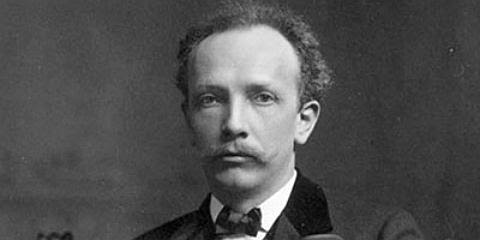MCO’s Brahms Sextet can be heard via live stream on Thursday 2 July at Melbourne Digital Concert Hall.
Richard Strauss (1864–1949)
Sextet from Capriccio Op 85
The German composer and conductor Richard Strauss (1864–1949) composed across many musical genres. He is possibly most remembered for his tone poems, symphonies and operas and his exquisite songs and concertos are often in the concert repertoire. Opera was very much a part of his compositional and conducting life. His last opera Capriccio Op 85 was composed over the years 1940–1941 and first performed at the Staatsoper Munich in October 1942. Subtitled Ein Konversationsstücke für Musik (A conversation piece for music), the opera is in one act with a series of 13 scenes (or conversations) around the question of the greater art – poetry or music? – in opera.
The string sextet (two violins, two violas, two cellos) acts both as a prelude to the opera and the subject of the first conversation. The work is built around the opening motive played by the first violin, and the beautifully subtle interplay between the instruments produces some remarkable textures and experiences.
The comments of writer Michael Kennedy on the opera could equally be applied to the sextet alone: “Capriccio is Strauss’s most enchanting opera. It is also the nearest he came to unflawed perfection in a work of art. It is an anthology or synthesis of all that he did best, and it is as if he put his creative process into a crucible, refining away coarseness, bombast, and excess of vitality.”
Johannes Brahms (1833–1897)
Sextet No 2 in G major Op 36
Johannes Brahms (1833–1897) wrote music for piano, voice, chorus, orchestra and chamber ensembles. His 24 chamber works, representing 40 years of his compositional output, span the period from the Piano Trio Op 8 (1854) through to the Clarinet Sonata Op 120 (1894) and include sonatas, trios, quartets, quintets and sextets. His output follows the traditions of Haydn, Mozart and Beethoven.
Brahms composed two string sextets for two violins, two violas and two cellos. The first was composed over 1859–60, and the second over 1864–65 while visiting Clara Schumann near Baden-Baden. The first performance of the work was in Boston, Massachusetts, in a concert of the Mendelssohn Quintet Club in October 1866 with the European premiere the next month in Zurich.
The opening Allegro non troppo is in sonata form and exudes a sense of mystery and tonal ambiguity. The two main themes provide a rich contrast for development and inspiration. The second movement is a scherzo, the main section of which wavers between melancholy and playfulness. This is contrasted to the middle section in the form of a robust ländler (folk-dance). The Poco Adagio is a set of five variations built on a sad and wistful melody. The final movement marks a return to the opening mood with the main theme initially marked tranquillo and later semplice giving an indication of the prevailing mood. The movement is marked by some exceptional counterpoint.
The English musicologist Sir Donald Tovey considered this to be “the most ethereal of Brahms’s larger works”. There is indeed a sense of elegance that encompasses this sextet.
David Forrest

